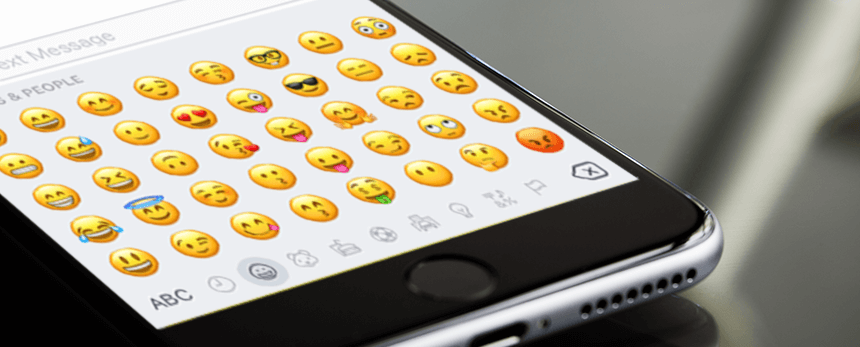If you’re down with the kids, you’ll know that Twitter has been a fan of emojis for quite some time. This became clearly apparent last year when it controversially switched its ‘favourite’ symbol from a star to a heart: one of the most popular emojis used across Twitter. Last week, just prior to today’s World Emoji Day (yes, it really is ‘a thing’!), Twitter announced emoji-based keyword targeting for Twitter ads. 
Why have emojis become so popular?
Without doubt, emoji use has exploded over the past year or two. Everyone seems to be using them, to the point where the word ‘emoji’ was named ‘Word of the Year’ in 2015 by the Oxford Dictionary. Over 110 billion emojis have been tweeted since 2014, and last year they accounted for nearly half of all text on photo sharing platform Instagram. A study last year by Emogi found that 92% of online consumers use emoji in some capacity. “On Instagram, emoji are becoming a valid and near-universal method of expression in all languages,” says Thomas Dimson, a software engineer on the Instagram Data Team. In the same way that SMS speak took off, emojis have become shorthand for how we feel, or what we’re thinking. They’re fun, quick and easy to use, work well within the 140 character limit on Twitter, and cut through most cultural and language barriers. Emojis are mobile-based too, and so their rise in popularity is most likely attributable to the growth in smartphone ownership and usage. 
A new type of data
Twitter isn’t the first to get excited about the new sort of data emoji marketing presents, and we’ve seen some well-known brands experiment with their use already. Marketers are continually looking for new ways to connect with their target audiences, in a personalised way, based on what they know about them. While there’s little evidence to prove it yet, emojis could potentially reflect a new form of customer data relating to purchase intent and sentiment. It could also give marketers insight into their emotional reaction to product launches, world events, topics in the news etc. Coca-Cola was quick to join in the emoji trend. Its #ShareaCoke Twitter emoji aimed to create a world record around the largest ‘cheers’. This campaign became a vital trending topic with celebrities, brands, and consumers around the world all joining in. GE last year developed an emoji “periodic table of experiments,” which it called Emoji Science, and got well-known US scientists in on the act. And Domino’s scooped the Cannes Lions Titanium Grand Prix award last summer for most breakthrough idea of the year, involving its creative use of emojis. The pizza chain developed a way to let existing customers place simple orders via text messaging, using emojis. Five hundred people tried out the service on its first day of launch, and as one might expect, it generated a flurry of media attention.
Targeting with emoji
Twitter’s rollout of emoji-targeted campaigns means advertisers can reach out to people who have recently tweeted or engaged with tweets featuring emojis. According to Twitter, “this new feature uses emoji activity as a signal of a person’s mood or mindset” and means brands can connect with people based on their expressed sentiment, or target people who have tweeted emojis of food, etc. The feeling is that emojis can drum up higher levels of engagement than hashtags, for example, helping to encourage mass participation in a brand event. While some may dismiss emojis as a frivolous campaign targeting metric, others will be keen to see if they can cash in on the trend. We expect to see some fun emoji campaigns coming soon, but it will be some time before we know how valuable and accurate a measure of intent and sentiment they really are.




